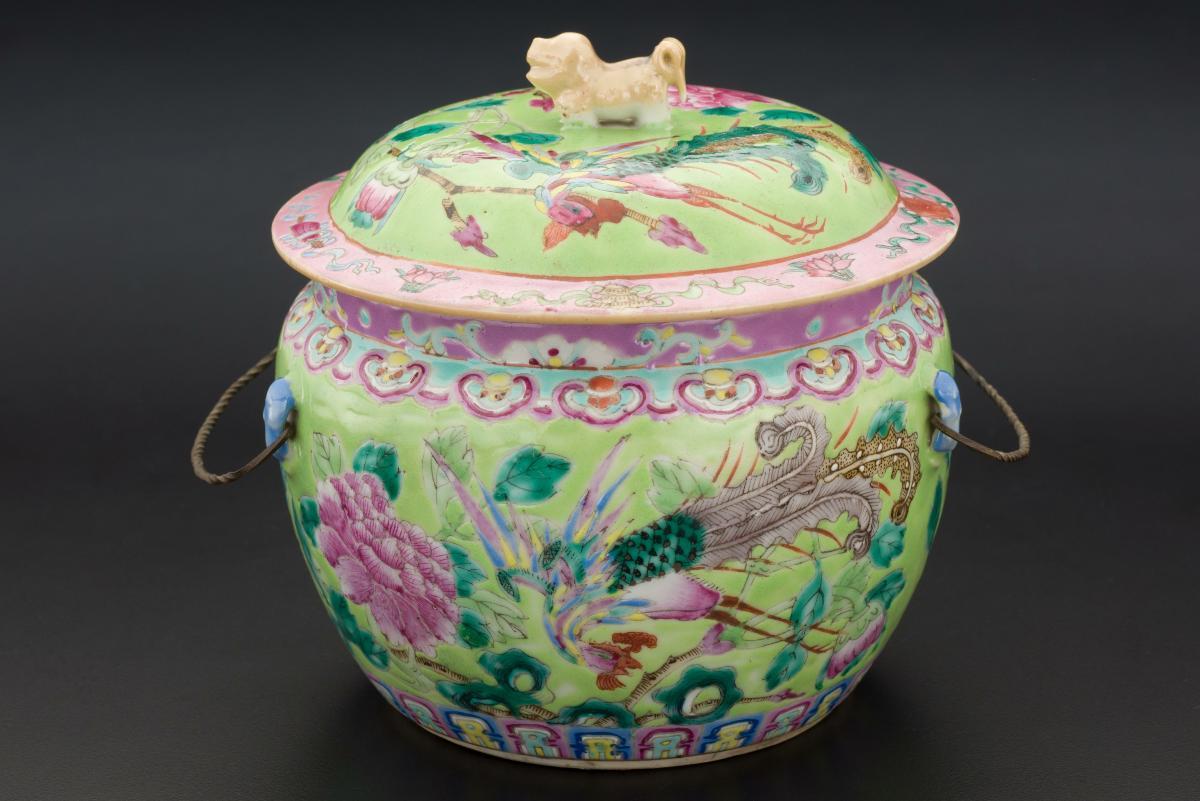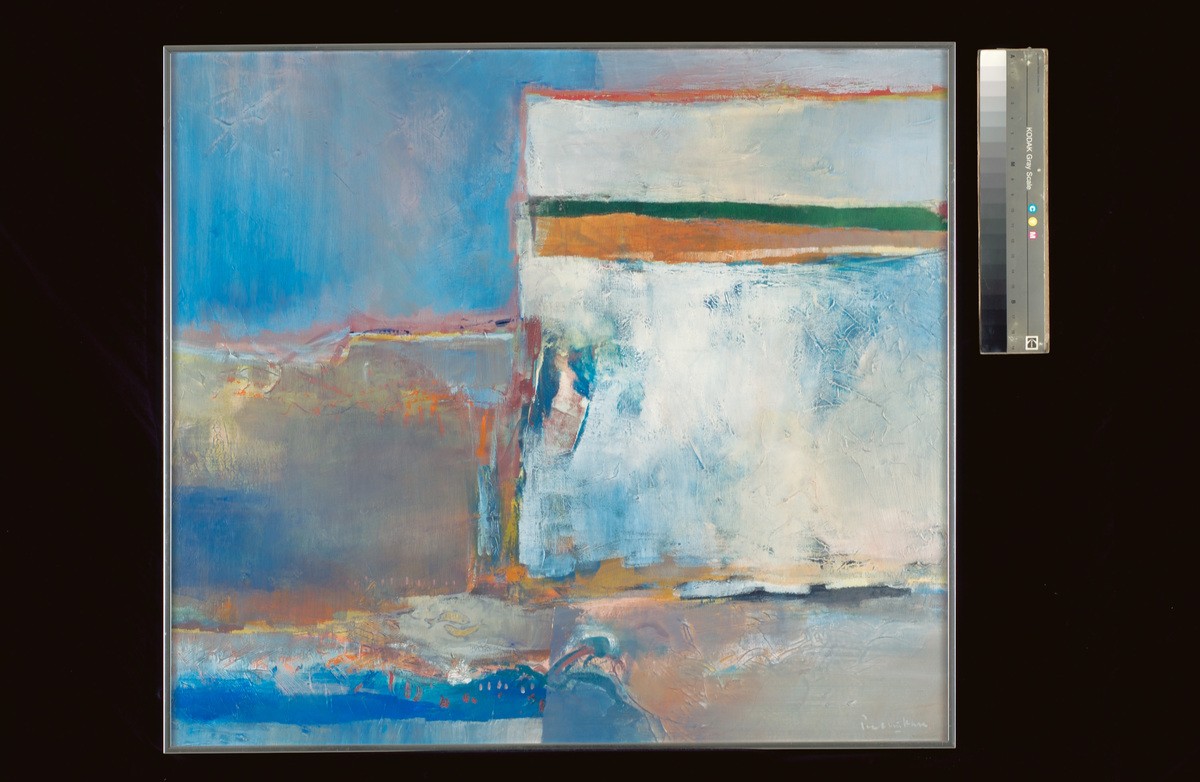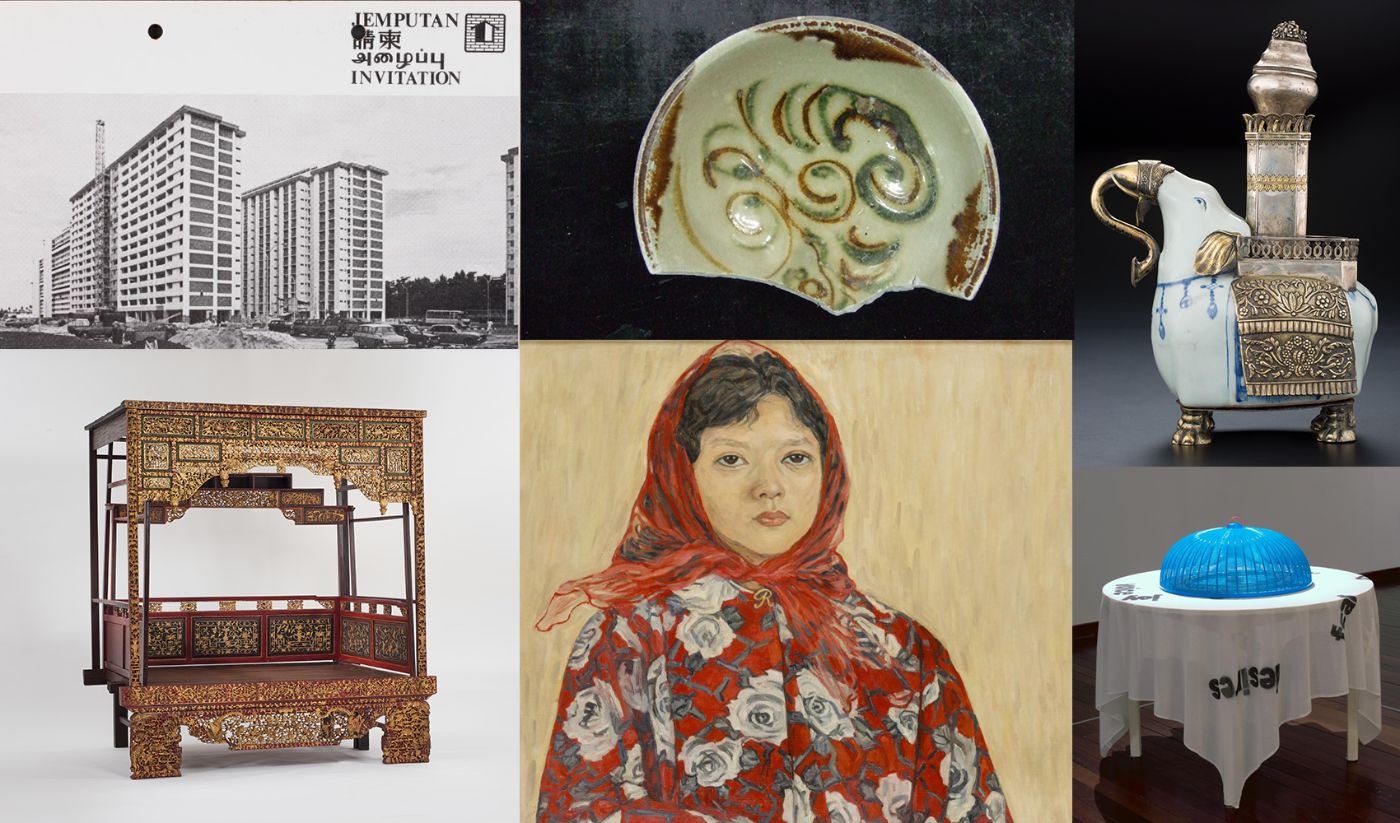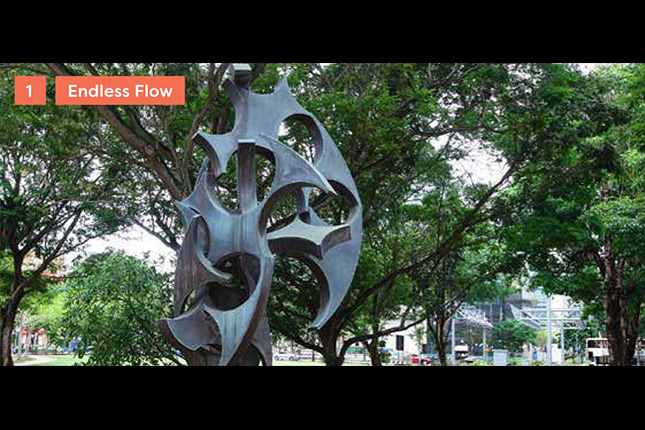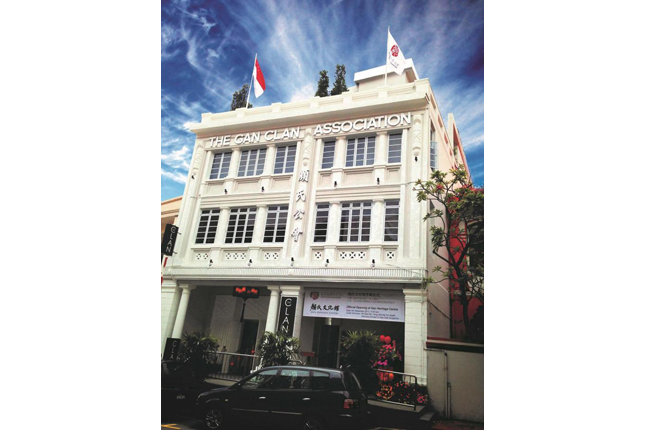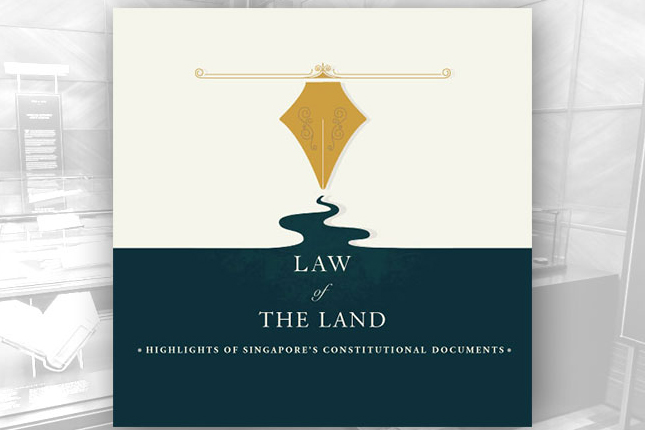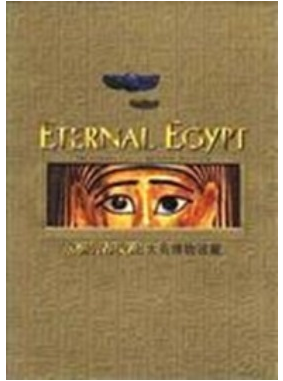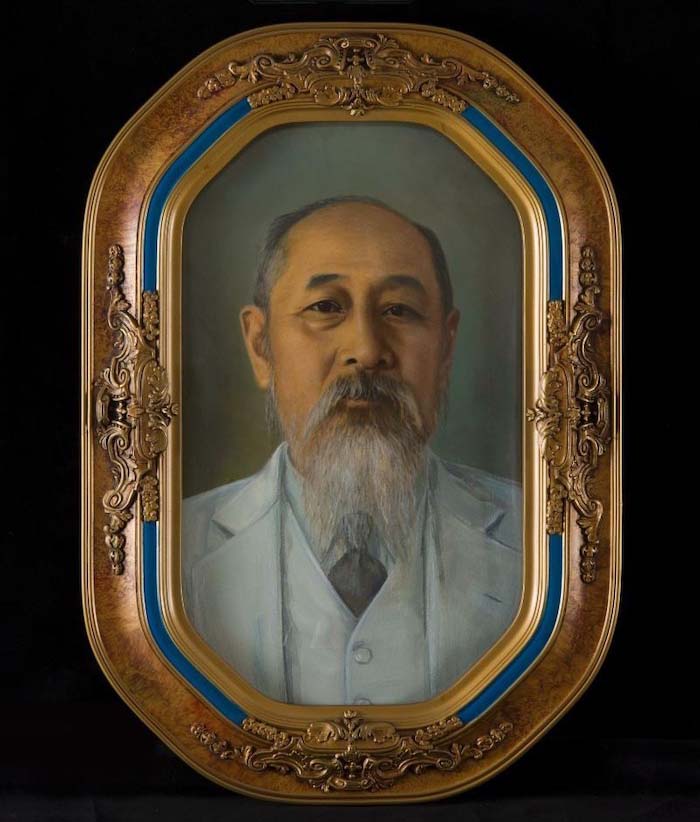Frame size: 203.0 x 490.7 x 6.8 cm
Pacita Abad's painting is characterized by color, constant change and experimentation from the 1970's right up to her passing in 2004. Pacita's most extensive body of work is her vibrantly, colourful, mixed media painted textile collages, abstract assemblages, and trapunto paintings. Many of these are very large canvases, but there are also a number of small works, incorporating hand-stitched textiles, ribbons, sequins, beads, buttons, tin, mirrors and many other found objects. Throughout her career Pacita also constantly worked on colourful prints, paper collages, and other works created on a complete range of materials from paper, bark cloth, metal, ceramics and glass. Pacita's early paintings were primarily figurative, socio-political works of people, refugees and tribal masks drawn from her experiences in Africa, Asia and Latin America. Flight to Freedom is the largest work and arguably the most significant social realist painting produced by Pacita Abad from her Cambodian Refugees Series. Pacita went personally to refugee camps in Thailand bordering Cambodia. These refugees were displaced due to the war between Vietnam and the Khmer Rouge (1978-1989). Pacita collected firsthand, stories of the refugees and produced a series of paintings capturing the abuse, homelessness, poverty and suffering of these refugees who were had to endure difficult and chaotic conditions at these camps. This painting was shown at the Bhirasri Institute of Modern Art (BIMA) in 1980 in Bangkok, showing how transnational the artist was in her concerns for the Cambodians directly suffering from impact of Cold War rivalries felt across Southeast Asia. It also demonstrates the movement of artists like Pacita who were exhibiting across the region.





